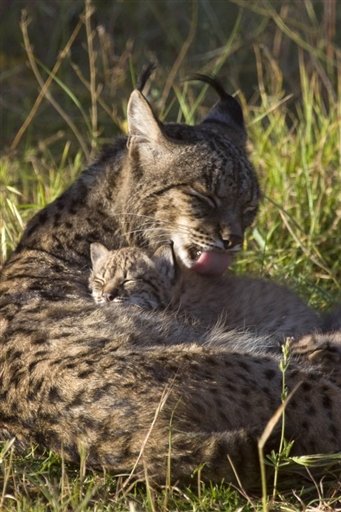New research results show that one-sixth of mammals in the Mediterranean region are facing the risk of extinction at the regional level, mainly due to the impact of habitat destruction from urbanization. , agricultural production and climate change.
Of the 320 species of Mediterranean mammals ranked by Geneva-based International Association for Conservation of Nature (IUCN), 49 species are threatened, of which 20 are not found in any any other place in the world.
Of these, three percent are 'seriously threatened' , including Mediterranean monk seals and Iberian bobbins, five percent 'threatened' and eight percent 'vulnerable'.
'The leading threat is habitat destruction, affecting up to 90% of species at risk,' said Annabelle Cuttelod, IUCN expert, co-author of the study, in a new publication. in Spain.
'We need an international action to protect key areas and preserve natural habitats to ensure sustained biodiversity in this area,' she added.
At present, efforts to protect endangered species are highly concentrated in the mountains of Turkey, northwestern Africa and the Near East (ancient lands including Syria, Jordan, Israel, Lebanon and Palestine today).

A bobcat with its offspring at the captive center in Donana National Park, southern Spain.Results from the new study show that one-sixth of mammals in the Mediterranean region are facing extinction at the regional level, mainly due to the impact of habitat destruction from the process urbanization, agricultural production and climate change.(Photo: Breeding Program Preserving Iberian Lucid.)
Huge herbivores such as deer, rabbits and predators are particularly threatened.
To date, eight of these species, including hippopotamus and polygon, have become extinct in the Mediterranean region.
'To ensure the existence of large herbivores and mammals in this region, we need to restore habitats and food chains,' said Helen Temple, co-author of the study. , said.
'We need to encourage people to accept large predators, strengthen management of protected areas, and enforce laws related to hunting,' she added.
This study does not include whales and dolphins, and noted the participation of more than 250 mammalian experts.
The results show that more than a quarter (27%) of the Mediterranean mammals have been declining in number, 31% are stabilizing population sizes and only 3% continue to transmit. growing quantity.The future trend of the remaining 39% has not been determined yet.
This is the first time all Mediterranean animals have been evaluated to serve the IUCN's establishment of the Red List of endangered species.
 Animal 'suffering' after hibernation
Animal 'suffering' after hibernation Why do goats climb well?
Why do goats climb well? Scientists were surprised to see chimpanzees eating turtles
Scientists were surprised to see chimpanzees eating turtles Giant catfish died deadly due to drought in Thailand
Giant catfish died deadly due to drought in Thailand